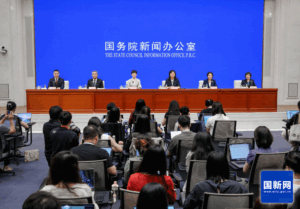“Basically, we have been contacted by all the main integrating players in the market.”
This is what many retail owners told us during our visits.
Since the push for integration began, the systems involved have become too numerous to count.
However, after analyzing current retail integration models, we find they fall into two core types.tion models, we find they can be divided into two core types:
The first type is focused on the supply chain in maternal retail, aiming to group together to stay warm.
It leverages more customized products to help stores improve profitability. This model may progress faster and show more direct effects.
The second type focuses on system empowerment and includes two approaches.
The first is led by a core head entity. Participants mostly join in a franchise format, changing signs, shelves, and full product lines. They also undergo a series of organizational training. This model is essentially a “big fish swallows the small.” The other type involves several strong entities joining forces. These groups combine core strengths to develop the market together. This can be summarized as “the strong join forces with the strong.”
Discussions on the advantages of integration have been many. Yet current retail integration models have left practitioners confused: What is the best model? What issues exist within current integration models?
On this issue, we have had in-depth discussions with multiple practitioners and have organized the core points of the discussion.
Related Resources: Future of Maternity and Baby Stores from a DeepSeek Perspective

The supply chain advantage is not the core benefit of integration
Some believe the supply chain in maternal retail should be the main advantage. If that were true, “Children’s Kings” might have already dominated. But many maternal stores around them are still doing well.
Additionally, as consumers increasingly demand personalization, the uniformity of products in large chains is already very high. The “same face in a thousand stores” may gradually lose its appeal to mothers.
Since the supply chain in maternal retail is not the core advantage, deeper empowerment may also become an important component of many integration plans, “but behind empowerment usually lies certain costs, and current maternal and child stores no longer have much profit margin to give up.”
Related Resources: What Makes a Winning Maternity and Baby Store in the 80,000-Yuan Market?”
Multi-party leadership cooperation may involve IP games, entangled interests
For brand owners, especially those with clear brand advantages, they naturally prefer the integration approach that unifies store signage. But in reality, after some collaborations have been implemented, the store fronts retain 2 to 3 IPs simultaneously, or use a form of suffixes.
For consumers, this inevitably creates a certain cognitive barrier, but it also indirectly reflects that “the current partners are still in a state of game-playing; no one wants to give up the store IP they’ve worked on for years.”
Moreover, for integration models led by two or more equal retail players, the entanglement of interests among the main bodies may be deeper. For instance, in the retail integration models, developing more targets is a common goal, but once a good target emerges, all teams naturally want to claim it first. In addition, whether each party is willing to share their unique supply chain advantages is also key to this power game.
“Human nature is always complex, and cooperation is predicated on a balance of interests. Once that balance is lost, the partnership might diverge.”
The rapid pace affects the precision of implementation
It is undeniable that since stepping into 2024, the race for territory by integrating entities of the maternal and child sector is accelerating, especially in competitions within the same region. Sichuan, Hunan, Jiangxi, and other places are undoubtedly hot spots for integration.
Thus, “claim territory first, then progress with empowering the ground” has become the core strategy for many integrating bodies.
This leads to two issues: firstly, in the rush to secure more targets, many integrators are not implementing regional protection policies during the “consolidation” phase, leading to an excess of targets in the same region and short distances between them. “When the market capacity can’t digest so many stores, it could end up with internal competition; your own stores competing with each other, eventually closing.”
Secondly, there’s a lack of actions like empowerment, training, and management of local service teams from headquarters. “Some service teams, when visiting stores, might only check the shelves and supplies without offering other operational support or business guidance.”
Related Resources: What makes mother-baby integration so challenging?
Maternal and child product integration is difficult to fully benchmark against pharmacy integration
In the process of integrating maternal and child stores, many practitioners habitually benchmark against pharmacies—inferring the future of integration in the maternal and child industry based on the success rate of pharmacy integration.
But integration in the maternal and child sector has its own uniqueness.
Firstly, maternal and child stores branched off from supermarkets primarily to cater to the demand for “slow-moving” items that are scattered, fragmented, and require deep service.
This also means that maternal and child store products do not possess the possibility of modularization and standardized replication, and can only complete the closed loop of supply chain and retail system standardization in the relatively fast-moving domain.
Supply chain in maternal retail can only standardize in fast-moving categories. This is why most integration focuses on milk powder. Pharmacies offer higher standardization and better margins.
his supports faster pharmacy integration. Maternal and child integration needs a different strategy
Conclusion
Cost, efficiency, and scale drive good retail. That’s why retail integration models are now trending in the maternal sector.
Still, caution from some retailers and recent withdrawals show the challenges.
Integration is not finished—it’s still evolving. Business models and partnerships need more refinement.
We welcome your insights on integration progress. Join the conversation in the comments section!



